From the West Hartford Archives: Fight over Lord & Taylor, Bishop’s Corner

Audio By Carbonatix
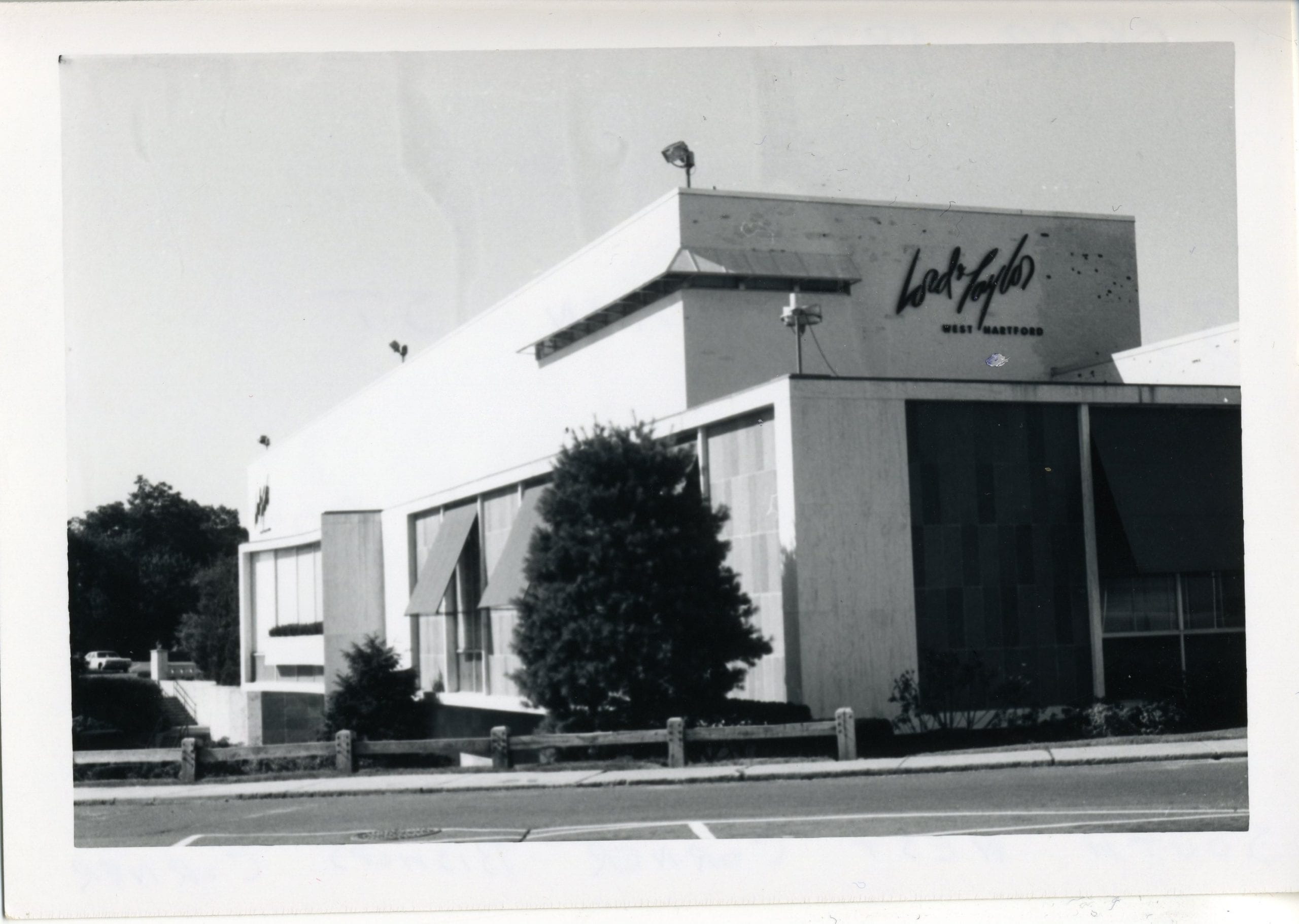
Lord & Taylor opened in Bishops Corner in 1950s. Photo courtesy of Noah Webster House & West Hartford Historical Society
Historian Jeff Murray takes a look into West Hartford’s past to uncover some surprising information, stir up some memories, or reflect on how much life has changed – or hasn’t changed at all. Enjoy this week’s ‘From West Hartford’s Archives’ …
By Jeff Murray
Lord & Taylor signed a lease in 1951 on the site of the Dutchland Farms restaurant at the southwest corner of Bishops Corner, behind a few lonely houses along North Main Street.
Lord & Taylor was one of America’s oldest department stores, founded by Samuel Lord and George Washington Taylor in New York City in 1826. The store grew steadily throughout the 19th century, becoming known for its focus on fashion, quality merchandise, and an upscale shopping experience. In 1914, it moved its flagship store to Fifth Avenue, helping solidify the street as a retail destination, especially in New York.
The years after World War II were critical though – Dorothy Shaver became president of the company in 1945, making her the first woman to head a multimillion-dollar retail operation in the U.S. As vice president, she had been influential in crafting Lord & Taylor’s image as a leader in American fashion, especially at a time when access to Parisian haute couture was restricted after the Nazi occupation of the city. The store championed homegrown talent and helped popularize American designers like Claire McCardell and Bonnie Cashin in the pursuit of practical and stylish clothing.
During the war, the store had supported rationing and war bonds, supporting the effort with patriotic advertising and a wartime lifestyle: practical fashion, uniforms, and utility clothing. Under Shaver, the store marketed lifestyle concepts, which bundled clothing, accessories, and even home goods, a precursor to modern branding.
In 1950, the Bishops Corner area of West Hartford was positioned for a large business block with Lord & Taylor as the main feature. The developer William A. Mauser had purchased both of the western corners in 1949, including the Dutchland Farms building. With an eye toward attracting larger commercial interests to the area, Mauser promoted the land for a large department store to consider locating a branch store.
Lord & Taylor was expanding in New York and came to an agreement to move to West Hartford, setting off a massive legal and social fight. In the history of Bishops Corner, analyzing the sentiment of the day can tell us a lot about how we feel about our own development today.
At the end of 1950, the Town Council passed an amendment to the zoning regulations to pave the way for town oversight over the development of any land tract over two acres. The West Hartford Home Owners Association was formed to oppose this change, fearing that this would launch the complete reordering of Bishops Corner. Supporters of the zoning change argued that it allowed the town to exert some control over unrestricted growth that was being seen after World War II. Since 1946, the Town Plan & Zoning Commission had attempted to revise the Bishops Corner business zone without agreement from property owners and the town council. The Home Owners Association took the town to court over the zoning amendment, signaling their opposition to any commercial development of the north end of West Hartford.
In January 1951, the group publicly came out against any development, arguing that they would fight with “all the force and vigor that we can muster” and take it to the Superior Court if it went ahead. Composed of residential property owners in the north end, Bugbee School became their home base for meetings under president Walter Mallory of Albany Avenue. They argued that they were okay with small business, such as drug stores and grocery stores, but didn’t want another business area the size of the Center.
When someone argued that a modern shopping center would bring in much-needed tax revenue, Mallory countered that it would cost the town more in operating expenses. Mallory found himself defending against some comments as well that Lord & Taylor’s other stores were attractive, but he simply said he wasn’t fighting Lord & Taylor but all large-scale business development.
A month later, they released a series of advertisements in the Hartford Courant in a campaign titled “Keep West Hartford Residential” to argue against the proposed Bishops Corner development. They snapped photos of three of the corners, which featured the deteriorating Dutchland Farms building and a gas station.
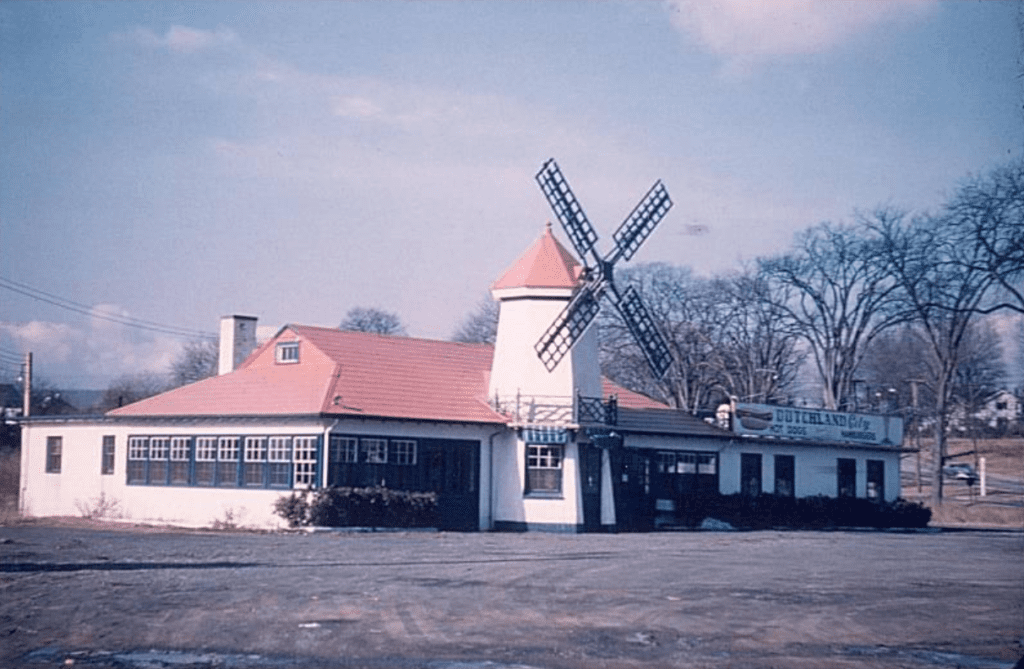
Dutchland Farms. Photo courtesy of Noah Webster House & West Hartford Historical Society (we-ha.com file photo)
“Who owns or controls these eyesores? The same people involved in asking for these vast extensions. We do not consider their past record a good recommendation for their future action,” reads one advertisement on Feb. 18, 1951. Another advertisement two days later shows children crossing the street with the text: “Do you think it is sensible to park 1100 cars just 8 house lots from this street crossing?”
The rise in zoning fights during this period reflected the postwar world that West Hartford faced. After World War II, the GI bill, higher car ownership, and a housing shortage drove millions of Americans into newly developing suburbs, including around Bishops Corner, where land was abundant and streets had been planned already. The late 1940s saw a shift from downtown shopping to a higher demand for suburban retail options, like shopping centers and strip malls (multiple would be built in Elmwood in just a few more years).
Earlier decades didn’t experience the same suburban pressure, or at least department stores were usually located in urban centers like Hartford, like G. Fox. But stores and other large institutions followed their customers into the suburbs, making zoning a key battleground for civic groups, like homeowners’ associations, which felt that their property values were being degraded by new arrivals. This became even more prevalent in 1950 when architect Frank Lloyd Wright chose the corner of Sedgwick Road and South Main Street for a new theater but faced bitter opposition from residents. Just a few months after Wright was driven out of town and the plan was killed, the fight over Bishops Corner erupted.
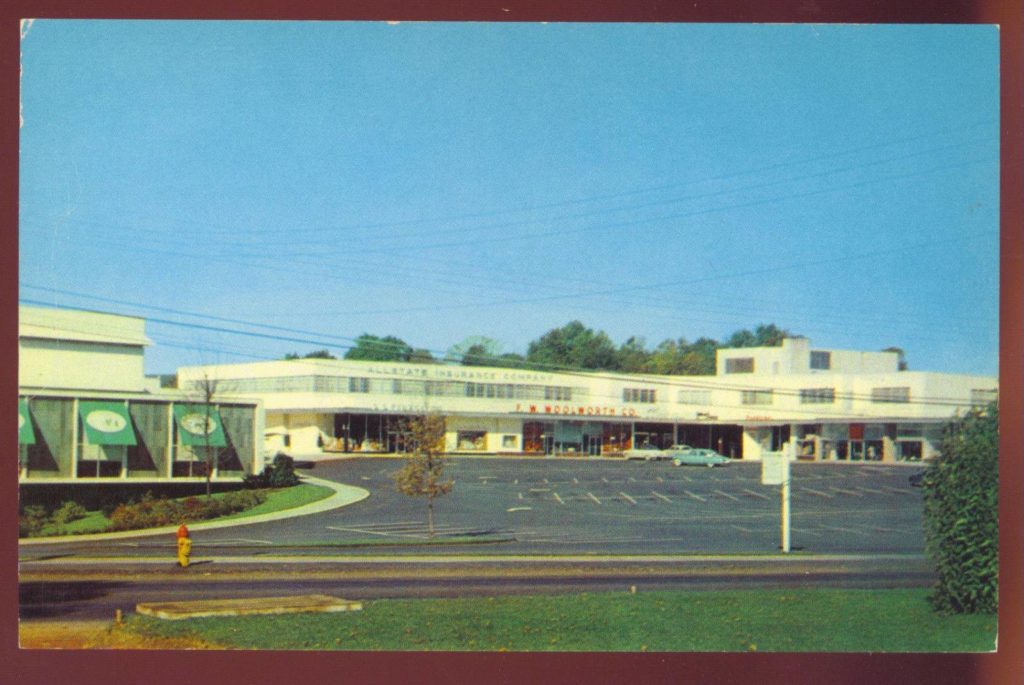
Lord & Taylor can be seen at the left in the 1950s photo. Courtesy of Noah Webster House & West Hartford Historical Society
Like anything in the public sphere, the other side had their say in the papers too. William Mauser, the planned developer, launched an ad against the Home Owners Association. He said that he had submitted plans publicly in April 1950 and “not a single objection was voiced at that time or until the present. Accordingly, we took this to mean definitely approval.”
Mauser argued that Lord & Taylor was the most attractive option and that the Home Owners Association’s proposal to incrementally develop Bishops Corner would be “inviting instant failure” because parking would never be sufficient if it wasn’t done in one go. “Do the opponents want to establish ribbon zoning, congestion and traffic hazards that some day will cost the town millions to correct? That apparently is their idea of ‘controlled’ development – whatever that means,” he noted on Feb. 22, 1951.
In early March, the Town Council shortly postponed action in the face of the vigorous resistance movement, but came back soon after to vote. They voted 5-2 in favor of the request for permission after two long drawn-out public hearings and hours of executive sessions. The Home Owners Association had been missing from the critical vote, but vowed to take the matter to court. At the core of the meeting though was all of West Hartford’s zoning for the previous 10 years – their argument for an injunction rested on how the town had done zoning business for years and if the court agreed, then it would upend dozens of decisions.
The Court of Common Pleas opened the first hearing on the injunction request on May 1, 1951. At that time, 380 residents, owning 190 homes in the north end of West Hartford, asked the court to nullify the zoning change from residential to business. The lawyer for the Home Owners Association immediately put forward the idea that the developer Mauser had been a client of one of the councilmen, who worked for Travelers Insurance Company, which would potentially be a conflict of interest. The councilman testified that he had also been asked to solicit business from Lord & Taylor but had declined to avoid the conflict of interest.
In June 1951, the Court of Common Pleas upheld the town council decision and ruled that they did not act illegally, dismissing the appeal. In return, the Home Owners Association appealed to the Connecticut Supreme Court, which ruled in January 1952 that the business development would go ahead. “The proposed use of the area in question for business development is the highest use to which the land can be put.”
The court also cited the fact that the enlarged business zone would accommodate a growing residential network in the north end. Since 1946, hundreds of new homes were built in the north end, as opposed to the early development of Elmwood, Farmington Avenue, and Main Street by the Center.
At the end of March 1952, ground was broken for Lord & Taylor, with the Home Owners Association in attendance. The department store branch opened in 1953, followed by the adjacent shopping center a year later.
The tenants in the first year were Allstate Insurance Company, Hartford National Bank & Trust Company, F. W. Woolworth, Peck & Peck, S. S. Pierce & Company, Doubleday Book Shop, A. S. Beck Shoe Company, Georg’s Gift Shop, Schultz Beauty Salon, Connecticut Cleaners, Hudson Hosiery Shop, W. A. Crosscup, Pumpernik’s Restaurant, and Valet Barber Service.
After the 1950s, some local governments began codifying strict single-use zoning laws, protecting the suburban “purity” that was lost from the earlier zoning fights. Suburban neighborhoods hardened attitudes and became exclusionary by design, often resisting multifamily housing or transit-based development.
By the 1960s and 1970s, larger retailers adapted to these fights by simply moving into newly built malls, like Westfarms in the south end. Malls were seen as more controlled. Retail simply reshaped itself to fit into the suburbs.

Jordan’s Furniture is now located in the former Lord & Taylor space at Westfarms. Photo credit: Ronni Newton (we-ha.com file photo, December 2022)
Lord & Taylor moved to Westfarms in the early 1980s, where it remained for nearly 40 years until its closure in 2020 and replacement by Jordan’s Furniture. Consumer habits shifted to discount stores like Walmart and Target and eventually online shopping hurt classic department stores. Stores that triggered zoning panics in the 1950s became casualties a half century later.
The fight continues now with housing. Maybe there’s a comfort in living through the same history we can read about.
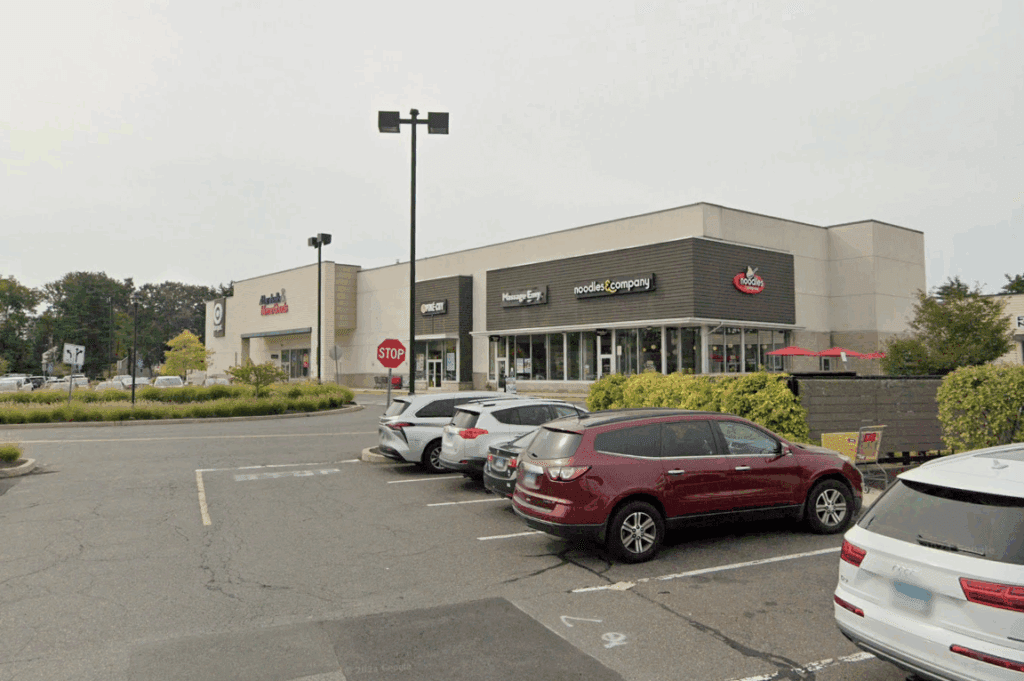
Bishops Corner Shopping Center. Google Street view
Jeff Murray was born and raised in West Hartford and has been involved with the Noah Webster House & West Hartford Historical Society since 2011 when he was a high school student and won the Meyer Prize for his essay on local history. Jeff routinely volunteers as local history researcher uncovering information for numerous museum programs such as the West Hartford House Tour and West Hartford Hauntings. Jeff works as a data analyst at Pratt & Whitney.
Like what you see here? Click here to subscribe to We-Ha’s newsletter so you’ll always be in the know about what’s happening in West Hartford! Click the blue button below to become a supporter of We-Ha.com and our efforts to continue producing quality journalism.


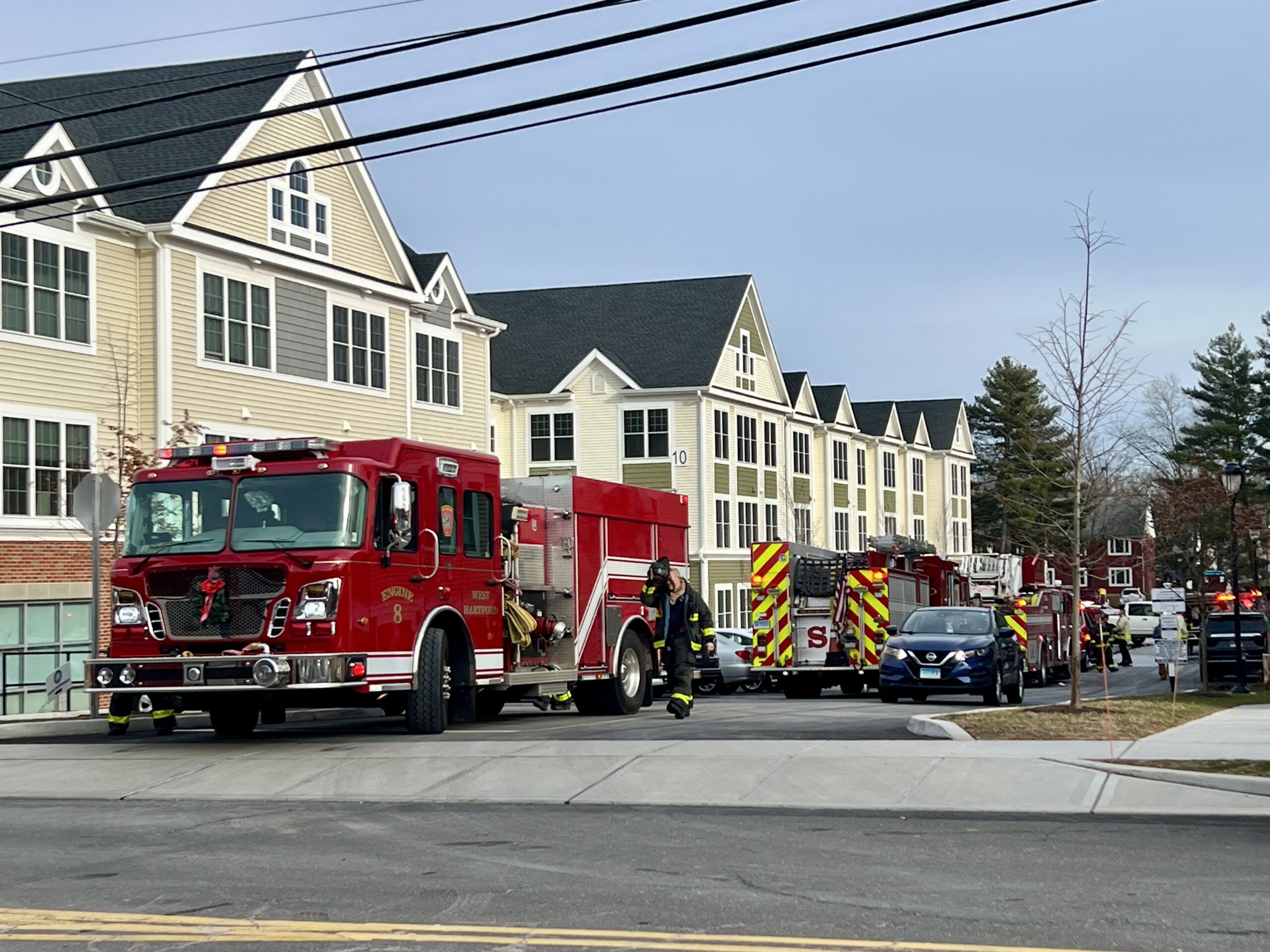

Jeff, thanks for this article. In 1940, my family bought a home on Asylum Avenue near Trout Brook. I recall a small market called Bon & Bills near the southeast of Bishop’s Corner. I think it disappeared when Lord & Taylor arrived. Do you have any knowledge of Bon & Bills?
Hi, Jeff,
Great article, as always, and so well researched.
One side note to the Lord and Taylor story. I seem to recall that many years ago it somehow came to the attention of West Hartford Planning and Zoning that Lord and Taylor’s iconic script sign exceeded the maximum dimensions allowed for commercial signage.
It’s possible they were forced to remove and reduce it, presumably at considerable expense!
Did you come across any mention of this in your research?